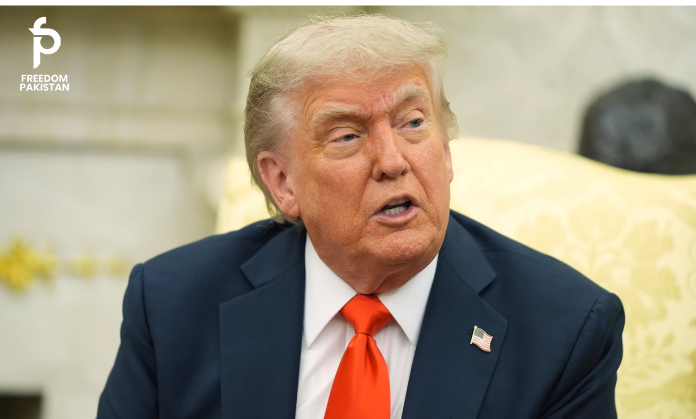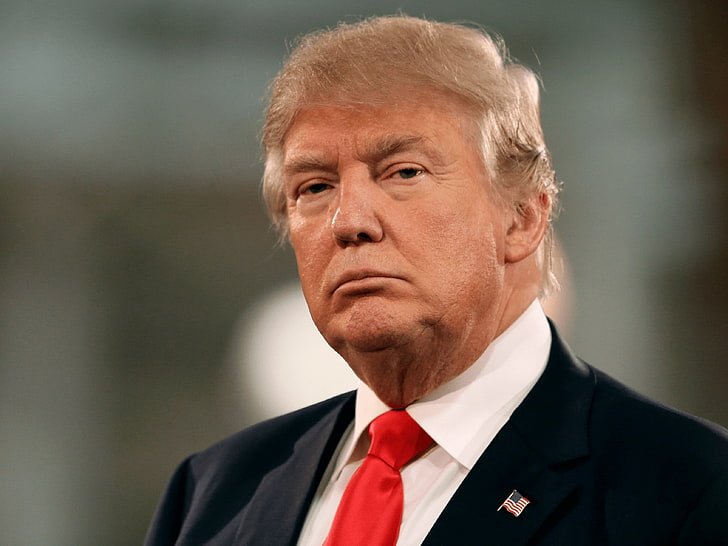In a recent Reuters analysis, President Trump’s announcement followed a tentative ceasefire between Israel and Iran, with the White House clarifying that U.S. sanctions remain formally in place. Trump emphasized that China “can now continue to purchase Oil from Iran,” but he also encouraged China to “purchase plenty from the U.S.,” framing the move as transactional—part of broader trade negotiations tied to regional peace. His messaging came just after U.S. strikes on Iranian nuclear sites and Iran’s decision not to close the strategic Strait of Hormuz—a critical channel for China’s energy imports
Introduction
On June 24, 2025, former U.S. President Donald Trump announced via Truth Social that “China can now continue to purchase Oil from Iran,” despite the “maximum pressure” sanctions regime imposed during his previous administration. Trump framed this as a strategic pivot intertwined with ongoing trade talks between Washington and Beijing, and tied it to a claimed ceasefire achieved between Iran and Israel. This declaration signals a major shift in U.S. sanctions posture—one that carries profound global repercussions for oil markets, China–Iran strategic ties, and the future of U.S. sanctions enforcement.
Background Context
A. U.S. Sanctions on Iran (2018–2020)
Under Trump’s first term, the U.S. withdrew from the JCPOA in 2018 and launched a sweeping “maximum pressure” campaign targeting Iran’s oil exports. Over 90% of Iranian crude typically headed to China before being aggressively curtailed. U.S. sanctions extended to Chinese “teapot” refineries, shipping entities, and insuring firms facilitating these purchases.
B. China’s Oil Imports and Strategic Reliance
China is a global energy giant, sourcing ~90% of Iran’s crude via smaller refineries that blend and rebrand shipments to mask their origin. These include “dark fleet” tankers that evade detection via disabled transponders. Though Chinese state oil giants reduced their Iranian purchases, these smaller operations sustained the flow.
C. China-Iran Energy Partnership
A 25-year strategic cooperation deal signed in March 2021 underpins this relationship. Under an agreement forged in 2020, China committed to $300–400 billion in investment across Iran’s oil, gas, petrochemicals, and infrastructure—entitled to heavily discounted oil through 2046.
Key Details of Trump’s Statement
-
Medium: Truth Social post on June 24, 2025.
-
Core message: Despite sanctions, China is “allowed” to import Iranian oil, with implicit hope it will also “purchase plenty” of U.S. crude.
-
White House response: Maintained no formal policy reversal, but tied Trump’s statement to the Strait of Hormuz remaining open after alleged Iran nuclear-site strikes, easing supply fears.
-
Geopolitical backdrop: Came days after reported U.S./Israeli air strikes halting Iran’s nuclear activities and an Iran–Israel truce.
China’s Energy Strategy
China’s energy security is under greater pressure as it transitions toward renewables and cleaner energy, but its industrial base remains heavily oil-dependent. With sanctions easing only intermittently, Iran continued to supply 80–90% of its oil to China, making Tehran a keystone in Beijing’s supply diversification.
China’s reliance on “shadow fleet” deliveries, extensively documented—including 1.4 mbpd in 2023, Iran’s highest since 2018—highlights the critical role of covert logistics.
On the ground in China
Reuters reports confirm that smaller refineries in Shandong province (aka “teapots”) had begun reducing purchases due to increased logistical costs and operational slowdowns—some flagged a plunge in utilization from ~64% to 51% mid‑June—with discounts widened to $3.30–3.50 per barrel below Brent . Simultaneously, so-called “ghost fleet” tankers—operating without standard tracking—were waiting with an estimated 70 million barrels of Iranian crude offshore near China, maintaining capacity to meet nearly two months of demand.
Despite these pressures, tanker-tracking sources like Vortexa and Kpler show China’s Iranian oil imports rebounded to a record 1.8 million bpd in March before dipping back to about 1.1 bpd in May, a roughly 20% decline year-over-year. This volatility reflects a tug-of-war between higher freight costs—risking up to $6 million per tanker charter—and tactical evasion strategies, including ship-to-ship transfers in Malaysian and Singaporean waters .
Iran’s Position and Response
Iran has readily embraced Trump’s statement as vindication of its strategy to bypass sanctions. Oil revenues—estimated at $53–54 billion annually (2022–23)—were nearly intact thanks to Chinese demand .
Moreover, $12.6 billion worth of Iranian oil exports are reportedly controlled by the IRGC, further deepening the strategic-economic nexus with China through its dark-fleet networks and “teapot” channels.
Geopolitical and Economic Implications
A. Undermining Sanctions Regime
Trump’s accommodation handcuffs U.S. abilities to restrict Iran economically. Analysts caution that without multilateral backing, other countries may follow suit, diluting enforcement.
B. Gulf Allies’ Reaction
Saudi Arabia and UAE—aligned with America—may interpret this as a shift toward tolerating Iranian oil sales, potentially complicating OPEC alignment. Regional energy diplomacy could prove more unstable.
C. Global Oil Markets
Oil prices dropped ~6% following Trump’s statement. Markets are trying to reconcile theoretical policy change with actual enforcement, producing volatility. From a market standpoint, the statement triggered a sharp ~6% drop in global oil prices, reflecting investor interpretation that enforcement may be loosening—even without formal policy changes. Analysts described Trump’s framing as a return to “lax enforcement standards,” as it bypassed earlier restrictions on Chinese “teapot” refiners and port terminals that had millions of barrels in floating Iranian inventories.
Why Trump May Have Allowed This
A. Ceasefire Leverage in Trade Talks
Trump, claiming credit for an Israel–Iran ceasefire, framed this as leverage to jumpstart stalled China–U.S. trade negotiations, suggesting “peace” unlocks benefits on both fronts .
B. Energy and Political Strategy
By sidestepping sanctions, Trump may be aiming to reduce geopolitical risk in the Strait of Hormuz, protect China’s supply routes, and push China toward purchasing more American oil—tying the move to domestic U.S. energy employment .
C. Tactical Messaging
Trump’s statement appears less a legal rollback and more strategic messaging—perhaps to pressure Iran diplomatically, or preempt criticism that sanctions alone aren’t shifting behavior .
Risks and Criticism
A. Domestic Backlash
Some Republicans and Iran hawks view this as ceding to China and undercutting sanctions: a slippery slope that weakens maximum pressure and could embolden Tehran.
B. Congressional Objections
Legal sanctions remain intact and would require Congressional action to repeal. Without this, the move may be symbolic with no legislative backing .
C. Risk of Precedent
If China is allowed to circumvent sanctions, other nations may follow, undermining multilateral coalition building and golden-standard sanction architecture.
Energy outlook:
Iran’s overall crude exports rebounded from around 0.4 mbpd in 2020 (post-JCPOA sanctions) to 1.4 mbpd by 2023, with 90% of that going to China . Meanwhile, Iran International reports that nearly half of Iran’s exports are controlled by the IRGC, with approximately $12.6 billion flowing to the organization via covert channels, reinforcing the deep state’s leverage within this trade.
Legal and diplomatic constraints remain significant:
U.S. legal experts note that any true waiver of sanctions would necessitate formal Treasury licenses and Congressional notification, a cumbersome process unlikely to have been completed just by a Truth Social post . Inside the Chinese system, port authorities already began banning “shadow” tankers from major terminals in early January, penalizing vessels tied to U.S. sanctions and reducing direct offloading—suggesting potential enforcement on both sides.
Strategic consequences:
A broader report by Reuters notes that while Iranian oil exports hit 1.5 mbpd in early 2024, price negotiation tensions slowed flows, with Tehran narrowing discounts from $10 to closer to $5–6 per barrel . Analysts suggest that even with temporary policy or messaging shifts from the U.S., the economic fundamentals are shifting: shipping cost increases, Chinese refinery slowdowns, and rising global oil prices may reshape the calculus behind buying Iranian crude.
Conclusion
Trump’s statement that China can continue buying Iranian oil marks a dramatic moment in energy diplomacy, sanctions policy, and U.S.-China strategic interplay. It underscores a pragmatic balancing act: preserving China’s flow of oil while exerting leverage to boost U.S. exports. But it also opens a rift in global sanction enforcement, risks alienating U.S. Gulf allies, and invites scrutiny from Congress. The move reflects Trump’s transactional style, using crisis-response and ceasefire crafting as bargaining chips in unilateral energy diplomacy. As oil markets react, the world watches to see whether this signals the start of a new era of sanctions flexibility, or an emblematic yet temporary concession tied to his broader trade stratagem.




